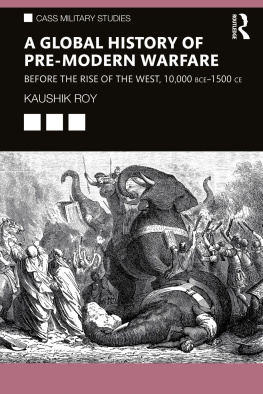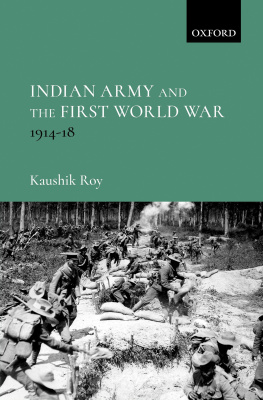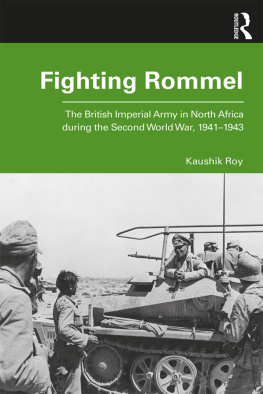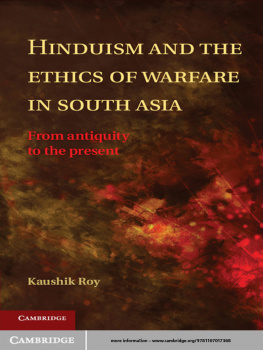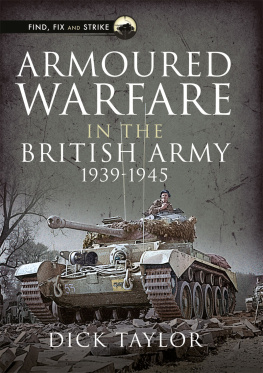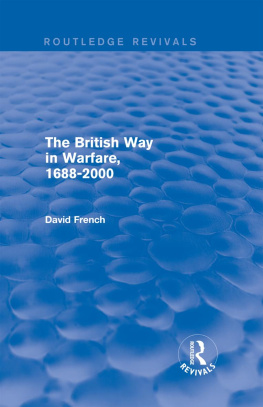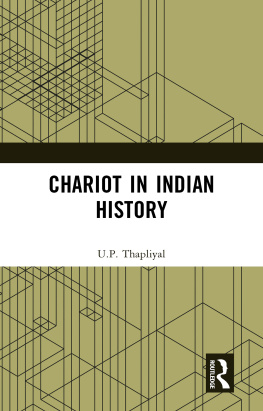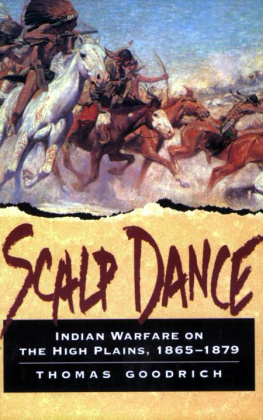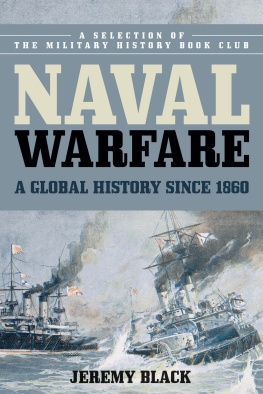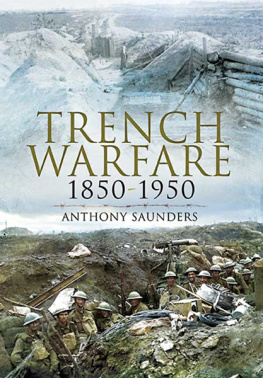Warfare in Pre-British India -1500 BCE to 1740 CE
Kaushik Roy
|J Routledge
Tay lor & Francis Group
LONDON AND NEW YORK
First published 2015
by Routledge
2 Park Square, Mil ton Park, Abingdon, Oxon, 0X14 4RN
and by Routledge
711 Third Avenue, New York, NY 10017
Routledge is an imprint of the Taylor & Francis Group, an informa business
2015 Kaushik Roy
The right of Kaushik Roy to be identified as author of this work has been asserted by him in accordance with the Copyright, Designs and Patent Act 1988.
All rights reserved. No part of this book may be reprinted or reproduced or utilised in any form or by any electronic, mechanical, or other means, now known or hereafter invented, including photocopying and recording, or in any information storage or retrieval system, without permission in writing from the publishers.
Trademark notice: Product or corporate names may be trademarks or registered trademarks, and are used only for identification and explanation without intent to infringe.
British Library Cataloguing in Publication Data
A catalogue record for this book is available from the British Library
Library of Congress Cataloging in Publication Data
Roy, Kaushik.
Warfare in pre-British India, 1500 BCE to 1740 CE / Kaushik Roy.
pages cm. - (Asian states and empires ; 10)
Includes bibliographical references and index.
1. Military art and science-India-History. 2. India-History, Military. I. Title.
U43.I5R69 2015
355.020954-dc23
2014025682
ISBN: 978-0-415-52979-2 (hbk)
ISBN: 978-1-315-74270-0 (ebk)
Typeset in Times New Roman
by Taylor & Francis Books
Contents
Preface
This book deals with the pre-1700 era. And at that time, India was coterminous with South Asia. Hence, both these terms have been used interchangeably in this monograph. Despite the fact that armies consumed the largest amount of revenue of the state and were the biggest government employer till 1947, our understanding of pre-modem (read pre-British) warfare in the subcontinent is nebulous. For ideological and political reasons military history is not the in thing within South Asias history circuit. There has been a lot of interest among the general public and also among academicians about the recent India-Pakistan flare-up, but study of history of warfare before the eighteenth century remains marginal. Some British and American historians including this author have tried to understand the linkages between the rise of British Empire in India and the East India Companys military success against the Mughal successor states from the late eighteenth century onwards. However, as one moves further back in Indian history, our understanding of warfare remains an uncharted area. This is partly due to paucity of sources. For the British era, a researcher gets documents stacked which are easily traceable in the archives of Britain and India. In contrast, sources about pre-1700 India are scattered in various libraries and, worse, they are in different languages. And not all of them are translated into English. In fact, the dilemma before a historian working on the preeighteenth-century era is whether he/she is to become a linguist and concentrate on learning different languages or the scholar has to go for learning methodologies in order to interpret the diverse sources for reconstructing a historical account. Besides English, this author can handle Sanskrit, Assami, Bengali, Hindi and Marathi, but not Persian, Urdu and the other regional languages. Hence, on several cases, I have to depend on translated versions. I acknowledge this limitation while writing this volume. Further, in this age of political correctness, if one attempts to analyse the Aryan invasion against the Dravidians, then the South Indians of present-day India might get offended. And if one takes up the pen to study Islamic steppe nomadic invasions, then there is the danger of stoking communal troubles and Hindutva feelings. Studying Islamic intrusion in medieval India as part of the Asian context (which is attempted in this monograph) might go against the dominant interpretation within India that the Mughal Empire was a unique polity characterized by Hindu-Muslim synthesis. This is not to suggest that the Mughal Empire was a communal/Muslim polity. Similarly, the invasion of Sri Lanka by the Tamils during the early medieval era is bound to have repercussion on present-day Hindu Tamil separatist struggle versus Buddhist Ceylonese nationalist attitude. Nevertheless, I feel that a scholars duty is not to go by current political concerns but to understand the past as it was. Overall, this volume takes a longue duree perspective and attempts a cross-cultural analysis. However, it is not merely a textbook. Our historical account is sprinkled with a lot of primary sources. Though the volume follows a linear chronological narrative account, its analytical content is heightened by trying to analyze military affairs through several heuristic devices.
Kaushik Roy Kolkata 2014
Acknowledgements
First of all, thanks to my friend Peter Lorge who showed interest in this project. Mr Peter Sowden of Routledge also deserves praise for sustaining this book project. And of course Helena Hurd, who tolerated my repeated failure to keep the schedule. I am also grateful to my student Moumita and my exstudents Pratyay and Dipanjan for providing me with some of the obscure sources. I remember the pleasant trip to Amsterdam in 2011 when Professor Dirk Kolff kindly and affectionately provided photocopies of some old journal articles. It goes without saying that the responsibility for all the faults is mine alone. I have written this book on the assumption that its very limitations will encourage someone to write a better volume on this topic. Lastly, I do not know how to thank someone without whom neither writing nor teaching would have been possible. I hope she understands.
Kaushik Roy Kolkata 2014
Abbreviations
C3I EIC GDP LOC MBT MTR | command, control, communications and intelligence East India Company gross domestic product line of communication main battle tank Military Technical Revolution/Military Technological Revolution |
ORBAT RMA RNA | order of battle Revolution in Military Affairs Revolution in Naval Affairs |
List of maps

Map 1 Alexanders route in India

Map 2 Border of Maurya Empire
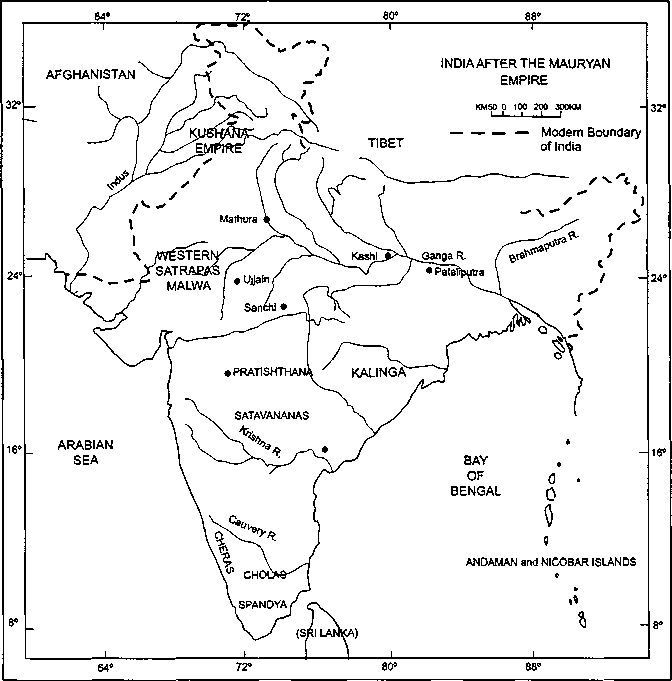
Map 3 India after the Mauryas
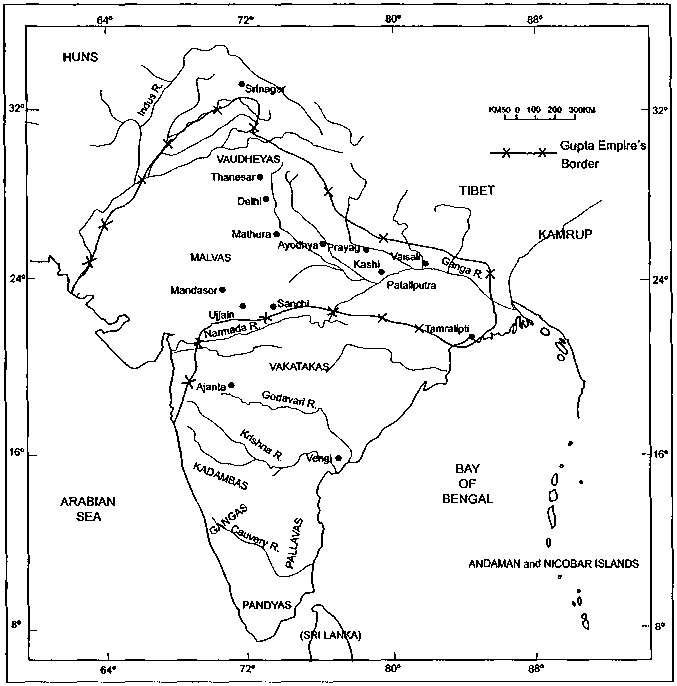
Map 4 Gupta Empire
KHURASAN
Dandamqan
Baihaq
*Tus Nishapur
Balkh BADAKHSHAN
GUZGAN GHARCHISTAN Paiwan'* Herat Jam
tkard
Border of Ghaznavid Empire circa 1180 CE
100 ' 2po ' 300 m9e
GHUR
Srinagar
JUqJSTAN
KASHMIR
TIBET
Slalkot
ZAMIND,
I /Zayang uj
Bardasir (Hirman)^^^-''/
Sirajan
KIRMAN
Jiruft 1
Bam
Qandahar
Mull
Ucct
Sibl j
Lahore^* UNJAB *A


